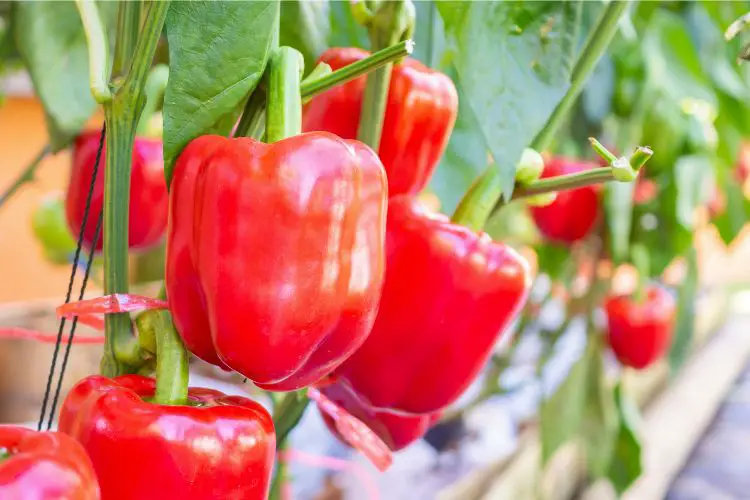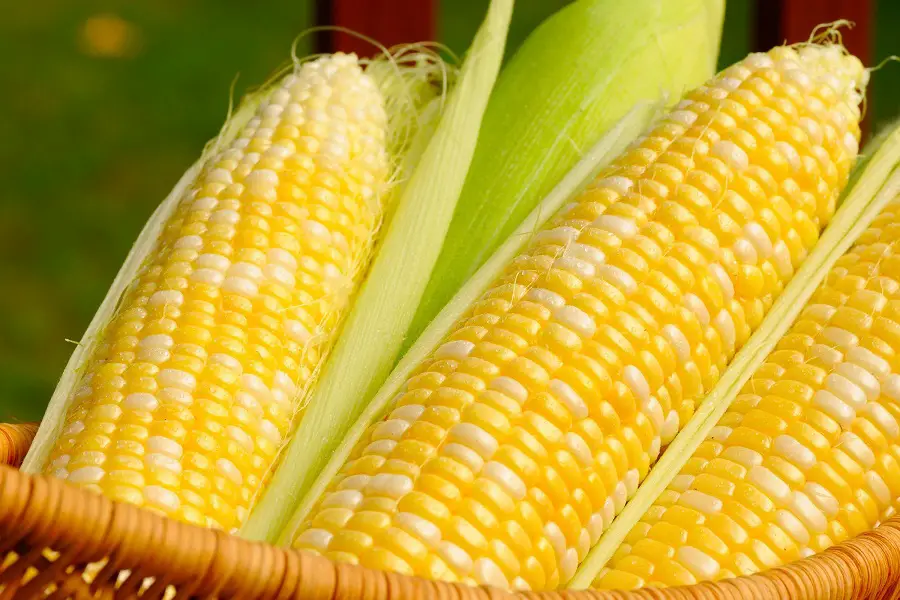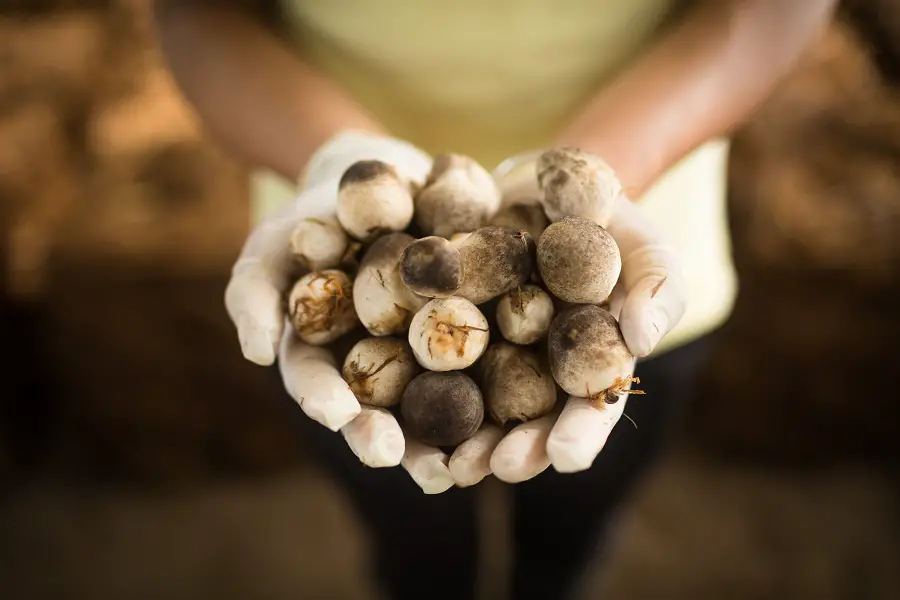Hydroponic peppers are an increasingly popular choice for gardeners and commercial growers alike, offering benefits over traditional soil-based cultivation. This method of growing plants without soil allows for greater control over the environment, leading to healthier plants and higher yields.
Whether you’re new to hydroponics or an experienced grower looking to expand your knowledge, our in-depth discussion will provide valuable insights on how to successfully grow these vegetables using hydroponics.

Benefits Of Growing Hydroponic Peppers
Growers have taken to hydroponic pepper cultivation for its many advantages, making it a popular choice among farmers and gardeners.
One of the main reasons people choose to grow peppers hydroponically is because they can achieve faster growth rates and higher yields compared to traditional soil-based methods.
In a hydroponic system, you have complete control over nutrient levels as well as pH balance. It also uses less water than growing outdoors. You have no soil-borne pests or diseases when you grow hydroponically.
Space Required for Hydroponic Peppers
The room you need for hydroponic pepper cultivation depends on the type and dimensions of the pepper plant, as well as which system is utilized.
Some varieties, like bell peppers, can grow up to 24 inches tall and wide, while hot peppers may only reach 12-18 inches in height. Research each variety’s specific growth habits so you can provide enough space between plants for optimal growth.
Different hydroponic systems also require varying amounts of space depending on their design and complexity.
If you’re working with limited floor space, consider incorporating vertical gardening techniques. This method is particularly effective when growing vining pepper varieties such as some hot peppers, which can be trained to grow upwards on supports.
The Best Hydroponic System For Growing Peppers
The ideal hydroponic system for peppers may vary depending on factors such as cost, area availability, and individual tastes.
Dutch Bucket – Best Pick for Large Setups
Dutch bucket systems are ideal if you have a large space to grow your hydroponic peppers. This method involves using individual containers or buckets filled with perlite or coconut coir. Each bucket is connected to a central nutrient reservoir through drip lines that deliver the nutrient solution directly to the plant roots.
Deep Water Culture – Best Pick for Small Setups
In deep water culture (DWC), plants are suspended in net pots above a container filled with nutrient-rich water while their roots dangle into the solution below. An air pump provides oxygenation to prevent root rot and promote healthy growth.
Kratky Method
The Kratky method is a passive hydroponic system that doesn’t require any pumps or electricity. Plants are grown in containers filled with nutrient solution, and as the plants consume water and nutrients, the water level drops, creating an air gap for root oxygenation.
Nutrient Film Technique (NFT)
In the nutrient film technique (NFT), plants are placed in channels where a thin layer of nutrient solution constantly flows over their roots. This provides continuous access to nutrients while also allowing adequate oxygen exchange at the root zone.
Wick Systems
A simple yet effective method for growing peppers hydroponically is using a wick system. In this setup, plants are grown in containers filled with an inert medium like perlite or coconut coir. Nutrients are supplied through wicks connecting each container to a central reservoir containing the nutrient solution.
Varieties of Peppers Commonly Grown Hydroponically
Each type has its unique characteristics and flavors, making them ideal for different culinary purposes. The popular pepper varieties are commonly grown hydroponically: Bell peppers, Jalapeno peppers, Cayenne peppers, Habanero peppers, and Ghost peppers.
Choosing the ideal pepper depends on your desired flavor. Cultivating peppers hydroponically allows you to try out different kinds that may be hard to locate in your neighborhood grocery store.
How to Start Hydroponic Peppers
We will discuss the three primary methods to start your pepper plants.
The first step in growing hydroponic peppers is germinating the seeds. Soak the pepper seeds in a container of water for a day to encourage germination. Next, place them on a moist paper towel or rock wool cube and cover them with plastic wrap to maintain humidity levels.
Cloning is another method that involves taking cuttings from mature plants that are then rooted in water or another suitable medium before being transferred into your chosen hydroponic setup.
Select healthy branches with at least two nodes and cut just below one node at a 45-degree angle. Dip the cut end into the rooting hormone to encourage root growth and place it in a container filled with water or moistened rock wool cubes.
Lastly, if you have already started your pepper plants in soil, transplant them into a hydroponic system. Gently remove the seedling from its current container, taking care not to damage the roots. Gently rinse the roots of the seedling with warm water to remove as much soil as possible. Once clean, place the seedling into your chosen hydroponic setup.
Ideal Temperature to Grow Peppers
When growing peppers hydroponically, it’s essential to maintain the ideal temperature range to ensure healthy growth and a bountiful harvest.
The first stage in growing peppers hydroponically is seed germination. During this phase, maintaining a consistent temperature between 75°F and 85°F is crucial for successful germination. A heat mat can be used under your seedling tray to provide additional warmth if needed.
Once your seeds have sprouted and begun developing leaves, you can transition them into the vegetative growth stage, For optimal results, aim for a daytime temperature range of 70°F to 80°F and nighttime temperatures around 60-65°F. As your pepper plants transition into the fruiting stage, maintain the same temperatures.
Light Requirements for Hydroponic Peppers
The right type and duration of light exposure play a crucial role in the development of your pepper plants, from seedlings to fruit-bearing stages.
Several types of artificial lighting can be used for growing peppers hydroponically: Fluorescent lights, HID (High-Intensity Discharge) lamps, and LED grow lights.
In addition to providing adequate light for your hydroponic peppers, it’s essential to maintain proper distance between the light source and plant canopy. Keep fluorescent lights six inches away from plants; HID lamps should be at least 24 inches above; LED lights can vary depending on their intensity but are typically placed about 12-18 inches away.
What Nutrients Should I Use for Peppers?
Growing hydroponic peppers requires a well-balanced nutrient solution to ensure optimal growth and yield. The primary nutrients needed by pepper plants are nitrogen (N), phosphorus (P), and potassium (K). N-P-K is essential for the growth and health of pepper plants, including root development, flowering, fruiting, and disease resistance.
In addition to N-P-K, peppers also require micronutrients such as calcium, magnesium, sulfur, iron, manganese, zinc, copper, boron, and molybdenum. These elements contribute to various plant functions like photosynthesis and enzyme production.
To provide these essential nutrients to your hydroponic pepper plants, you can use pre-formulated nutrient solutions available on the market specifically designed for growing vegetables. Alternatively, you can create your custom blend using individual nutrient salts based on the specific needs of your pepper variety or stage of growth.
Also see:
- How to Make Liquid Fertilizer for Hydroponics
- Best Hydroponic Nutrients and Fertilizers
- DIY Hydroponic Nutrients
Optimal pH For Growing Hydroponic Peppers
The desired pH range for pepper plants is between 5.5 and 6.5, which facilitates the highest possible uptake of nutrients by the roots. Regularly monitoring and adjusting the pH levels will ensure that your peppers grow healthy and produce a bountiful harvest.
To maintain proper pH levels, use a reliable pH testing kit, and check at least once a week.
Maintaining proper pH levels is crucial because it directly affects how efficiently pepper plants can absorb nutrients from their surroundings. When the pH is not in an ideal range, certain nutrients may become inaccessible to the plants, leading to nutrient deficiencies and stunted growth.
Growing Hydroponic Peppers Indoors vs. Outdoors
Growing hydroponic peppers indoors and outdoors each has its advantages and considerations.
Ultimately, the choice between growing hydroponic peppers indoors or outdoors depends on your specific circumstances, resources, and preferences. Indoor hydroponics offers greater control and year-round availability, while outdoor cultivation benefits from natural resources and potentially larger plants.
Hydroponic Bell Pepper Yield Per Plant
Hydroponically grown bell peppers often produce higher yields compared to those grown in soil. This is because hydroponics allows for optimal nutrient delivery and environmental control.
On average, a single healthy hydroponically-grown bell pepper plant can produce between 20-50 fruits per season or around 3-4 pounds of fruit. Some high-yielding varieties can produce up to 100 fruits per plant under ideal conditions.
To maximize your harvest, choose high-yielding varieties such as ‘Big Bertha’, ‘California Wonder’, or ‘Giant Marconi’.
Common Problems
Let’s discuss these common problems in growing peppers hydroponically and how to address them.
Failure to Monitor Your Plants
Regular monitoring is crucial in hydroponic pepper cultivation. Failure to monitor plants can lead to nutrient deficiencies, pH imbalances, or water-related problems. To avoid this, maintain a schedule for checking nutrient levels, pH levels, and overall health of your plants.
Pests
Pests can infest hydroponic systems and harm pepper plants. Common pests include aphids, spider mites, whiteflies, and thrips. To prevent pest infestations, implement proper hygiene practices, such as regular cleaning of the growing area and equipment. Inspect plants regularly for signs of pest damage, including discolored leaves, wilting, or the presence of insects.
Poor Lighting
Lighting plays a crucial role in the growth and development of pepper plants. Inadequate or improper lighting can result in stunted growth, weak stems, and poor fruiting. Ensure that your hydroponic system provides sufficient light intensity and duration for the peppers.
LED grow lights are commonly used in indoor hydroponics due to their energy efficiency and ability to provide the specific light spectrum needed for plant growth.
Improper Upkeep of the System
Hydroponic systems require regular upkeep to ensure their proper functioning.
Develop a maintenance schedule that includes cleaning and disinfecting the system, checking and replacing nutrient solutions, inspecting and unclogging irrigation lines, and monitoring the overall health of the plants. Regularly clean and maintain any filters, air stones, or other components of your hydroponic setup.
FAQs
Some of the common questions for growing hydroponic peppers indoors.
How long do peppers take to grow hydroponically?
Yes, peppers thrive in hydroponic systems as they benefit from the controlled environment and consistent nutrient availability. Hydroponics allows for faster growth, higher yields, and year-round production of various pepper varieties.
How long do hydroponic pepper plants live?
In hydroponic systems, where plants receive consistent nutrition, water, and light, pepper plants can have extended growing seasons compared to outdoor cultivation. With the right care and maintenance, some hydroponic pepper plants can produce fruit for several years.
Conclusion
Hydroponic peppers are a great option for those who want to grow fresh produce in a limited space. With the right hydroponic system, nutrient solution, and growing conditions, you can enjoy a bountiful harvest of flavorful peppers grown hydroponically.
If you’re ready to start growing your hydroponic peppers at home but need some guidance on getting started with the right equipment and techniques, visit our website today!




